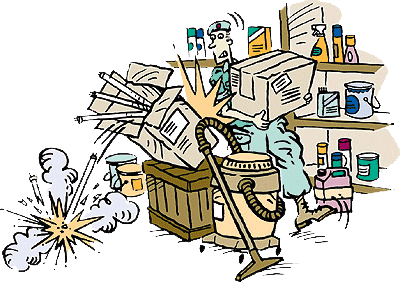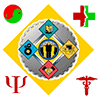
The Integrated Safety Culture Analysis Observational Protocol
Observational
 Observation can be one of the most valuable strategies for gaining an understanding of many of the day-to-day issues that may act as foundations for safety behaviour. The power of the observational approach is in the unplanned and natural behaviours that are able to be noted during the observational period; ranging from general conversation between staff regarding safety and related matters, right through to how staff communicate with managers in regard to safety etc.
Observation can be one of the most valuable strategies for gaining an understanding of many of the day-to-day issues that may act as foundations for safety behaviour. The power of the observational approach is in the unplanned and natural behaviours that are able to be noted during the observational period; ranging from general conversation between staff regarding safety and related matters, right through to how staff communicate with managers in regard to safety etc.
Observation is a powerful tool for us as safety leaders. But like many other powerful things, it is only powerful when used. Water can be stagnate and sour or, if moving, can be literally the life-blood of electricity. Like water, observation only becomes powerful when properly put to use.
How powerful can it be? It is a multiplier in that we can multiply our personal experiences by observing the experiences and results of others. And observation is the raw material of any holistic attempt at analysis..
Once we recognize the potential value, we must take some steps to put this value to work. Here are five ways to do that.
Pay more attention. There are literally thousands of things you can observe in your normal day. As I write this, I have just returned from a (new to me) foreign country where everything seemed new – in these moments, our system is jolted to heightened observation to make sure we can get around, understand our surroundings and more. Yet even our normal daily working routine has more opportunities to learn than we realize. To harness the power of observation, we must notice more, and pay more attention – this often means speaking less, a real challenge for some.
Observe with more than your eyes. Most definitions of the word observe relate to seeing or noticing, yet there is more to notice or observe in a situation than just what we can see. Notice sounds, smells, and pauses. Notice hesitation and excitement, listen for clues and more. We harness the power of observation when to notice with all five of our senses, not just one.
Soak in the experience. I once read that the best thing to do when on a vacation and you want to remember something you were seeing was to take a complete experience imprint. Rather than just taking a picture, really experience a situation with all of your senses. Allow the moment to become so memorable that you can come back to it later for further enjoyment. When you are experiencing things you want to experience again or reflect on, don’t take a picture of it, live in the moment. Once you have that fully dimensional memory, you can continue to mine it for information, observations and learning. Harness the power of observation by making your observations more rich and complete.
Ask about what you see. It isn’t enough to just be in the moment, you want to be thinking about things as they are happening. Ask yourself questions about what you are experiencing, and you are seeing, hearing and more. With that curious mindset, you will notice more, giving you more input for later reflection. You harness the power of observation when you interact with your experiences in a curious way. This is a key element when observing a safety culture in action (or inaction as it may be).
Pick a filter(s). Two people can experience the same thing and have very different memories of it and lessons from it. The reason this happens is that we all perceive the world through filters. Take my recent trip to South Africa for example. If I considered my experience as a tourist, I gain one set of observations and lessons. If I notice my surroundings and experiences as a safety leader, I get very different insights. Same experience, different observations; which lead to different connections and different learnings. So apply the filters that relate to your current objectives, and if you have really soaked in the moment, as suggested above, you can mine experiences through different filters later on. Harness the power of observation by consciously choosing the filter to see your world through.
Transformational Safety® considers the observational protocol a key component of the Integrated Safety Culture Assessment. It is for this reason that only Transformational Safety® Master Facilitators are in a position to offer this level of service. All Transformational Safety® Master Facilitators have extensive experience within the field of applied safety management, hold internationally recognized qualifications in safety audit procedures, and have been independently accredited by Transformational Safety® in the best practice cultural models that make up the basis of the observational protocols.
Click Here to acces an excellent Paper enitiled “Measuring psychological safety in healthcare teams: developing an observational measure to complement survey methods”.
Click Here to review the history of the Transformational Safety Integrated Safety Culture Analysis.

Kevin, Perth
![]()
“I was fortunate to attend Transformational Safety’s Anatomies of Disaster Program. This was amongst the most powerful two days I have ever spent in a room. From the outset David Broadbent set the scene by dedicating the program to the late Rick Rescorla – the man who is credited with saving over 2700 lives on 9/11. Throughout the two days David would often respectively reflect and remember those who had died, or been injured, in the disasters we explored. He would say, and I will never forget, “…we must always remember those that lost their lives lift us up into the light of understanding”. I learnt so much. HRO, Resilience Engineering, Critical Incident Stress Management (CISM) and more. Those of us who were there are still talking about it…… Thankyou David


